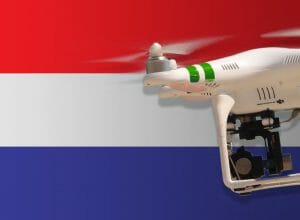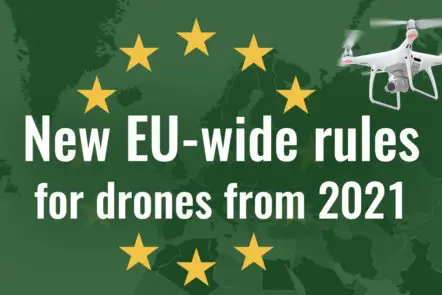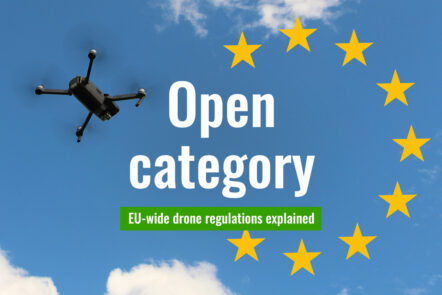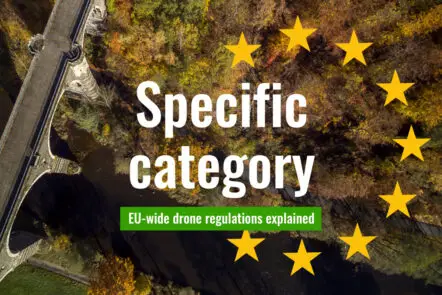Drone regulations in the Netherlands
Last update on 13.07.2023 | 11 Kommentare

In this post, you will find the regulations for the use of drones in the Netherlands.
The EU Drone Regulation has been in force in the Netherlands since December 31, 2020. This has largely harmonized the rules for remote pilots. You only have to register as an operator in one European country and your EU drone license is also recognized across countries.
If you want to register in Portugal, you can do so via the platform DigiD. You can find detailed instructions here.
Overview of the European rules that apply in Netherlands
In Netherlands, the regulations of the European Aviation Safety Agency (EASA) apply. The following is a summary of the key facts. For a complete overview, read our article on the new EU drone regulation.
National peculiarities in Netherlands
Each country can define certain aspects of its drone regulations. For Netherlands, the following requirements apply in addition to the European regulations.
Further rules for drone pilots in the Netherlands
It is currently not mandatory to have drone insurance. But it is recommended.
You can obtain drone licenses from authorized centers. Flight schools are also responsible for the A1 / A3 certificate. You will find a list of schools and further information on this page.
Safety distances and flight bans
To identify no-fly zones, the map linked above provides a good orientation. The colors in the map have the following meaning:
- Red: flight within the Open Category not possible.
- Yellow: Area with high risk, here you have to be especially careful
- Purple and blue: Restricted areas (often limited in time)
- Green: Natura2000 areas
To airfields located in uncontrolled airspace, you have to keep a horizontal distance of 3 kilometers.
Drones are not allowed to fly over populated areas, industrial facilities, ports, railways, gatherings of people, and public roads.
You always have to give way to other aircraft. That means you have to land immediately when a plane or helicopter is approaching.
For flights in Natura2000 areas, permission must be obtained in advance from local authorities within the province.
Good to know
Drone flights are permitted only in uncontrolled airspace (airspace G). This means that currently, no flights are possible on the Caribbean islands of Bonaire, St. Eustatius, and Saba. Due to their size, the controlled airspace extends over the entire islands. Therefore, it is easier to leave the copter at home.
Special case Curaçao
Even though the island belongs to the Kingdom of the Netherlands, Curaçao has its own rules for drone flying. A distinction is made between private and commercial use. All drones must be registered, otherwise, they will be confiscated upon entry.
Hobby pilots are only allowed to fly in the Curaçao Radio Control Club Field and on private land. You need the consent of the owners.
Commercial pilots can fly anywhere, but not in restricted airspace. They also need liability insurance.
These general safety regulations apply:
- Keep the drone within sight
- Stay below 120 meters (400 feet) high
- Don’t fly over people
- Keep a distance of 50 meters from buildings, facilities, vehicles, and people
- Only start in good weather and visibility conditions
- Pay attention to the privacy of others
- Ensure the equipment is safe and ready to fly
Two authorities are responsible for registering the drone: the civil aviation authority CCAA and the BTP (Bureau Telecommunicatie en Post), which coordinates the radio frequencies. Accordingly, both should get the registration form. Contact at CCAA: Michael Llanes, Aviation Safety Inspector Operations ([email protected]), contact at BTP: [email protected]
We have researched the listed drone regulations for the Netherlands to the best of our knowledge. We can not guarantee the correctness of the information. If you want to be on the safe side, please contact the competent aviation authority. Alternatively, you can also ask the embassy in your country for further information about the regulations. Please leave us a comment when you receive news and/or gain experience with your copter in the Netherlands!
 EU-wide drone regulations: Classes of drones explained
EU-wide drone regulations: Classes of drones explained
 New EU-wide rules for drones from 2021
New EU-wide rules for drones from 2021
 EU-wide drone regulations: The Open category explained
EU-wide drone regulations: The Open category explained
 EU-wide drone regulations: The Specific category explained
EU-wide drone regulations: The Specific category explained
Hey guys! I wanted to share some info for your drone traveller blog about fpv rules in the netherlands. Officialy FPV is not allowed in the netherlands because one of the rules is that we need to see our drone at all times but if you have a spotter then it’s allowed. Most of the times people just fly without a spotter with fpv but none of the police know about these rules.
Hi Rowan,
Thank you for these insights!
Hi Francis,
I plan to travel to Amsterdam and take my Mavic pro for private purpose not commercial purpose. I checked the website of GEO Map. Is it OK to fly in the warning and enhanced warning zones? thanks a lot.
https://www.dji.com/flysafe/geo-map
Alex
It depends on the area, but in many cases it is okay. Please also check the official map. You find the link at the end of my article.
The DJI map with restricted zones is very different from the official map with no-fly zones. I flew over Delft a little bit this week, just to test the DJI Spark and I didn’t have any problem. I’ll test again later today.
So, which map or rules I should check? Official map is entirely covered by no-fly zones. ????
Hi Jordan,
The official map represents the rules of the Netherlands. That’s why you should rely on the official map.
Hi Francis,
Part of your post reads; ”Phantom models are not allowed because all systems must be redundant. Each flight must then be reported to several authorities.”
Does this apply to personal use as well? Or is it just for commercial. I currently have a DJI Phantom 3
i wish to do a brief flight above the cemetery in groningen in November only over the RND military graves, is this allowed , i am a hobbyist pilot not a commercial one ,
peter
Informative article. Thanks for this.
Use the app GoDrone! And be amazed by the large areas where you can’t fly….
Hi Willem,
Yes, we understand the frustration of finding out that there’s a drone ban in a particularly beautiful spot. But we assume that we all want this hobby to remain safe for everyone. There’s always the option of contacting the relevant authority and asking for permission to fly.